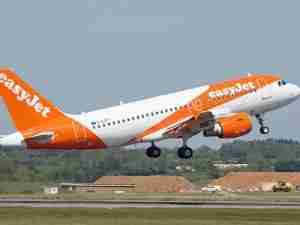"Airlines are able to drive average fares higher," CRT Capital analyst Michael Derchin said. "They're getting more business travelers flying who tend to pay higher fares and ancillary revenues continue to increase."
Derchin noted that fuel prices remain volatile and threaten to erode progress airlines have made in controlling costs.
US Airways said that amid the improving revenue environment, it expects to be profitable in the current second quarter, which would mark its first profit, including items, since the third quarter of 2007.
Until last week, US Airways and United, a unit of UAL Corp , were in merger talks. The chief executives of both airlines have long been advocates of consolidation.
"US Airways has the most to prove now that it is no longer in merger discussions with United, and it appears US Airways has done that by significantly beating analysts' estimates," said Morningstar analyst Basili Alukos.
In late afternoon trading, US Airways shares sank 12 cents to $6.36, while the S&P 500 was down 2.2 percent. United shares were down 8.1 percent at $20.55. The Arca Airline index was down 4.4 percent.
Consolidation Talk
UAL remains in talks with Continental Airlines Inc on a deal that could form the world's largest airline.
During a call with analysts, US Airways said its discussions with United may have spurred Continental to reopen merger talks with United. US Airways said it would prefer to participate in consolidation, but does not need it to survive.
US Airways also said there is potential for more cooperation with United and Continental, but the airline does not expect this to happen imminently.
All three airlines belong to the global airline network, Star Alliance. Continental is the newest member, having joined late last year. Previously, Continental was a part of the SkyTeam alliance, spearheaded by Delta Air Lines .
Last week, Continental said it was weighing options in regard to mergers, and United Chief Executive Glenn Tilton said the same during a conference call with analysts.
"At this time we are thoughtfully considering our options in that regard," Tilton said, who later added that there was more to be "extracted" from all its alliance relationships.
A source familiar with the talks said that the two airlines are haggling over the exact ratio of shares that United plans to pay for Continental.
United shares have fallen for two straight days since that report.
United Sees Strength in China
UAL, the No. 3 U.S. airline by traffic, said it saw strong results in mainland China. Unit revenue in Japan improved 20 percent in the first quarter and the company has seen prices rise in nearly all major markets.
The company's first-quarter net loss narrowed to $82 million, or 49 cents per share, compared with $382 million, or $2.64 per share, a year earlier.
Excluding one-time items, UAL posted a loss of 55 cents per share, compared with a consensus Wall Street forecast for a 72 cents per-share loss, according to Reuters I/B/E/S.
The company recorded $15 million in cash losses on fuel hedges that settled in the first quarter. UAL also reported noncash, net mark-to-market gains on its fuel hedges of $31 million.
UAL said first-quarter revenue gained 15 percent to $4.24 billion. The company ended the quarter with cash amounting to $3.8 billion, unrestricted cash of more than $3.5 billion and restricted cash of nearly $300 million.
Net debt in the first quarter was $7.7 billion.
US Air sees 2008 Revenue Levels
At US Airways, the first-quarter loss narrowed to $45 million, or 28 cents per share, from a loss of $103 million, or 90 cents per share, a year before.
During the call, US Airways said it is getting close to 2008 revenue levels.
Excluding one-time items, US Airways posted a loss of 55 cent










